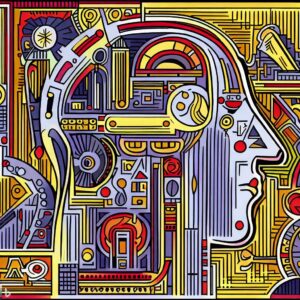
We often find ourselves in pursuit of an abstract ideal, a concept of excellence that feels like the ultimate expression of our intellect and capacities. This pursuit elicits a sense of completeness, the feeling that all the components are perfectly aligned, creating a sense of rightness, and a deep-seated satisfaction. These experiences shape our attempts to perfect ourselves and the world around us, guided by robust principles and ethics that we believe are inherently right and virtuous.
However, it’s crucial to note that our goal isn’t the ideal itself, but rather a reflection of some of its characteristics, the “essence” of this ideal. Can this be found in seeking “perfection” in our actions, thoughts, and interactions? Not necessarily. We aim to always do what’s right, emulating what we believe to be the manifestation of this ideal – precise, effective, and complete. Yet, our concept of perfection is often dictated by our preconceived notions about how things should be. When reality fails to align with these standards, we may experience dissonance, frustration, and even anger.
In our endeavor to bring more ‘rightness’ to the world, we might find ourselves driven towards reform in various aspects of life. Some of us may gravitate towards social reform, while others focus on moral, political, or ideological improvements.
This desire for reform emerges from our deep-seated drive for harmony with our inherent potential and its inherent perfection.As we delve deeper into self-awareness, we may begin to appreciate the subtle complexities of life and develop a more flexible and responsive outlook. Our concept of the ideal, in its true form, is fluid and adaptable. This adaptability allows us to express ourselves appropriately, depending on the context, without feeling tied down by rigid expectations or rules.
The real journey towards this ideal lies in the pursuit of self-realization, as well as understanding our authentic self. This is a kind of inner work towards embracing who we truly are, our strengths, and our areas of growth.We often grow up with the belief that we are ‘good,’ and we strive to maintain this perception. However, as we become more self-aware and present, we understand that our goodness is inherent, not defined by rigid beliefs or views.
In this state, our minds become open, adaptable, intelligent, and attuned. We don’t feel compelled to be right; we can accept our mistakes, willing to listen, learn, and grow. Yet, we still embody the essence of rightness, the rightness of authentic being.
Our desire to be good is a part of our ideal self-image. However, fixating on this image often leads to a borrowed or constructed morality, which can disconnect us from our inherent nature. If we delve deeper into the origins of this self-image, understanding its construction and development over time, we can begin to perceive it as a distorted representation of what the idealized aspect truly is.
Consider the example of a good teacher you may have had the opportunity to meet. Striving for excellence in their work, they grapple daily with a balancing act akin to walking a tightrope. On one side, they navigate age-old traditions of teaching and established curriculums. On the other side, they adapt to the evolving needs of their students and changes in societal expectations. This is a daily challenge that demands they continually refine their approach and understanding of effective teaching, while also adhering to set guidelines and regulations. This journey of balance, adaptation, and constant self-improvement brings them closer to a profound understanding of their true potential and the ideals they aim to embody, rather than to a place of “getting it right” in ways that can often trap us.
HOW TO DO THIS AT A PRACTICAL LEVEL?
Perfectionism often positions us in an ongoing struggle with our own expectations—constantly aiming for an unattainable state of flawlessness. This can induce feelings of dissatisfaction, leading to negative emotions like frustration and resentment. To address this, it can be helpful to shift our perspective: instead of pursuing a state of absolute perfection, let’s appreciate our human nature which encompasses both our strengths and imperfections.
A constructive way to navigate perfectionism is by focusing on our relationship with intelligence.
Ask yourself: Do I recognize my intelligence, or do I feel that it’s lacking? Identifying how we perceive our intellectual capabilities, be it presence or absence, can offer insight into our own self-image. This process often includes considering our relationships with significant figures in our lives, such as our parents, as they’ve played key roles in shaping our self-perception.In many cases, we may find that we project qualities we desire onto our parents, or other figures.
By consciously integrating the notion of brilliance—an amalgamation of intelligence and a more compassionate, realistic form of perfection—we can achieve a deeper self-understanding.
This integrated intelligence allows us to amalgamate diverse experiences and insights, a capacity that goes beyond the constraints of a perfectionist mindset.In essence, integrated intelligence is about accepting ourselves wholly, acknowledging our strengths, while also understanding our weaknesses. It serves as a key to unraveling the complexities of our identities, facilitating personal growth.
A FEW MORE PRACTICAL STRATEGIES FOR DEALING WITH PERFECTIONISM AND RIGHT-ISM:
Self-reflection: Spend time each day contemplating your thoughts and emotions. Understand your perceptions of intelligence and their roots.
Mindful acceptance: Recognize that perfection is an unrealistic ideal. Accept and embrace your strengths and weaknesses as integral parts of your being.
Positive affirmations: Regularly remind yourself of your abilities and accomplishments. This can help shift focus from perceived inadequacies to a more balanced self-view.
Goal setting: Set realistic and achievable goals for yourself. Instead of striving for perfection, aim for progress.
